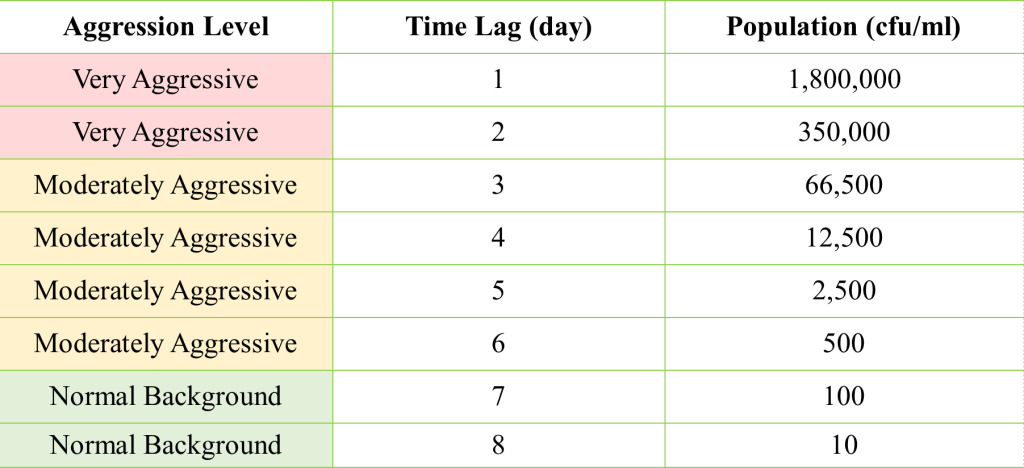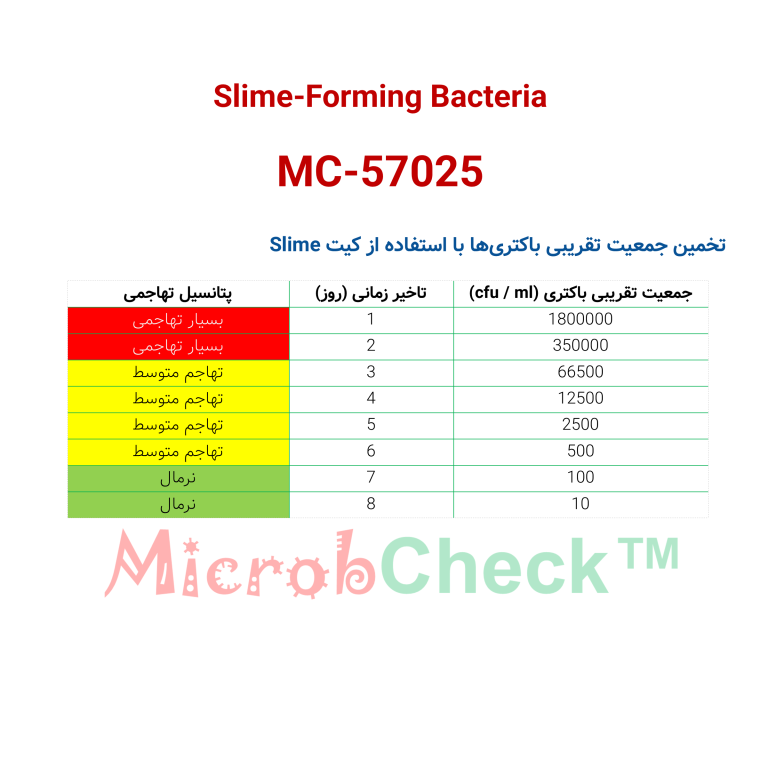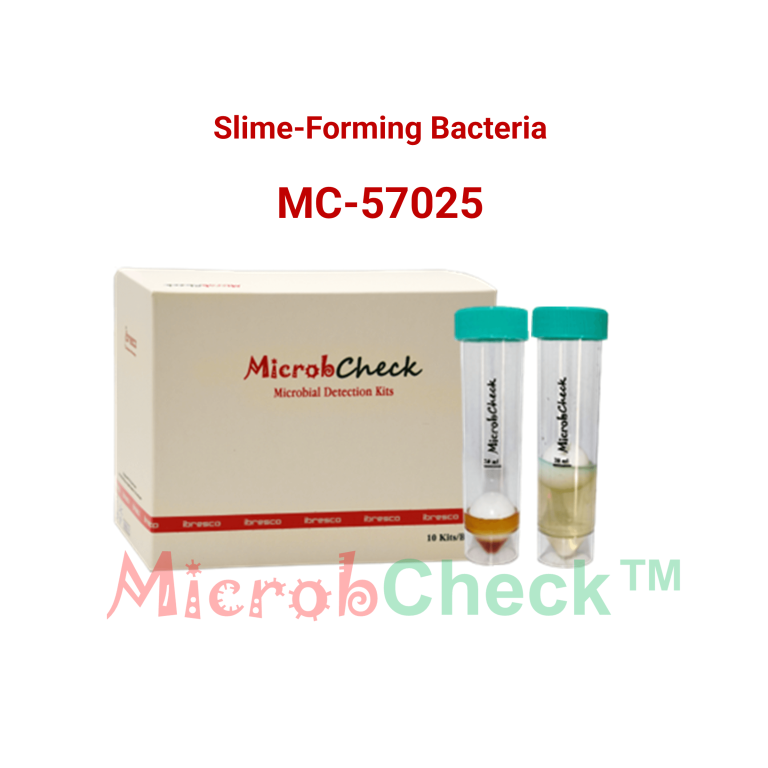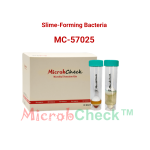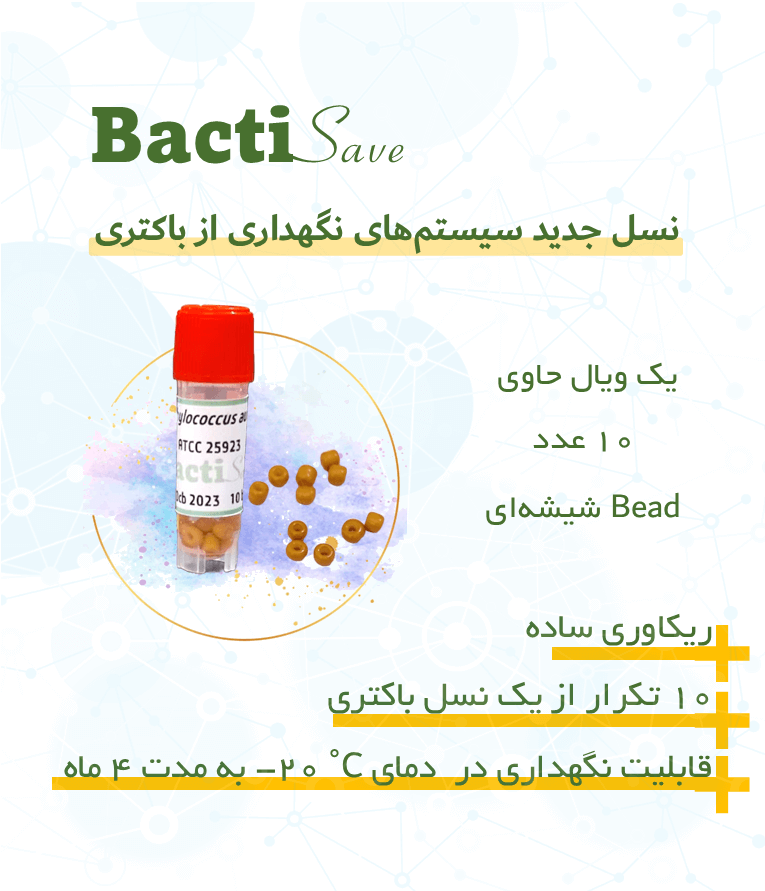توضیحات
Slime-producing bacteria are a group of bacteria that can produce slime even without the need for iron accumulation. For this reason, the slimes produced by these bacteria cannot be seen with yellow, red and brown colors that are often produced by IRBs Some IRB bacteria have the ability to produce slime. The slime produced by IRB bacteria is usually denser due to the accumulation of insoluble iron.
Slime-producing bacteria are able to produce slime both in aerobic and anaerobic conditions, but usually in aerobic (oxidation) conditions, the produced slime shows more density.
The majority of bacteria have the ability to generate slime-like formations, typically composed of exopolysaccharide polymers. These extracellular polymeric substances (EPS) are created through enzymatic processes acting on carbohydrates Beyond connecting cells, slimes have the capacity to trap a significant amount of water. Indeed, the volume of slime is predominantly water, ranging between 95 and 99%.
If the environmental conditions are harsh, for example, there is little food in the environment, the slime layers formed will be thicker and denser. Actually, slime seems to have a protective role for bacteria. It can also absorb some chemicals.
Many slime-producing bacteria can also produce colored pigments. These slimes are usually seen with white, gray, yellow or beige colors. Red color is formed in the presence of Serratia marcescens bacteria and purple color is formed in the presence of Chromobacterium or Janthinobacterium strains. The black color is characteristic of the production of iron sulfide or carbonates, which is often associated with the presence of a mixture of enteric bacteria in the sample.
Slime-producing bacteria can cause serious engineering problems. Because their growth is associated with a decrease in electrical or thermal conductivity and a decrease in water quality. Their growth is followed by increasing turbidity and changes in the taste, smell or color of the water.
The MicrobCheckTM Slime test kit can determine the presence / absence of slime-producing bacteria. Also, according to the starting day of the slime formation reaction, it can provide an estimate of the approximate population of slime-producing bacteria.
The MicrobCheckTM Slime test kit is designed as a 50 ml falcon containing culture medium and a floating ball.
Expiration date: 6 months after production
Storage condotions: Maintain the slides at a temperature of 4-8 degrees Celsius, away from direct sunlight and prevent freezing.
Test
Test
Preparation
Collect at least 25 ml of sample.
Pour 19 ml of the sample into the falcon and close it.
Write the date and name of the sample on the falcon.
incubation
Incubate the falcon at room temperature (21-25°C) away from sunlight.
View the sample every day for 8 days. Note the date of the first observed reaction.
Growth Patterns
Growth Patterns
Presence / Absence Test
If one of the growth patterns is observed in the test falcon, it indicates a positive test. According to the type of pattern observed, it is possible to present hypotheses about the bacteria in the sample that are mentioned below.
Growth Patterns
Dense slime or Gel-Like – DS: In this model, the slimes are spherical gel-like structures. It may be necessary to rotate the falcon slightly for better viewing. In this case, the settled slimes will rise. The shape of these gels is defined by indistinct edges that settle quickly. When the slime settles, the culture medium can be seen clear. The color of slime can be beige, white, or yellowish orange.
Slime ring around the ball – SR: A ring of slime with a thickness of 2-5 mm is formed on the upper surface of the ball. Its appearance is often mucoid and can be white, yellow, orange or purple. This ring becomes denser and more intense over time.
Cloudy plates layering – CP: When the dominant population in the sample is aerobic bacteria, the initial growth occurs in the oxidation and aerobic section and is seen with a yellow-brown color. Most of these structures are similar to thin plates with a thickness of 1-2 mm. In this pattern, if the falcon is slightly shaken, the plates move to maintain their position in the falcon. These layers are usually seen 15-30 mm below the surface of the liquid. The CP pattern can expand and spread throughout the liquid and form the CL pattern.
Cloudy growth – CL: The solution inside falcon becomes very cloudy. Sometimes slimes grow around the ball. Sometimes a glow is seen above the falcon. This glow is caused by the production of fluorescent pigments by Pseudomonas strains. These pigments are seen with pale blue or yellow-green color. This glow may not be visible without UV light. If a glow is observed in the presence of UV light, it is probably caused by potentially pathogenic Pseudomonas strains in the sample. In this case, confirmatory tests are required.
Blackened liquid – BL: This reaction is often the second or third reaction. The BL reaction is often characterized by a clear and often colorless culture medium and a black deposit in the bottom cone of the falcon or on the walls. The BL pattern in this test often aligns with the BL pattern in the IRB test.
Thread-like strands – TH: In this model, the slimes can form a web-like structure in the liquid medium, which can be seen from the ball towards the inside of the falcon. This pattern is extremely rare.
Pale Blue glow in UV light – PB و Greenish-Yellow glow in UV light – GY: This pattern is characterized by fluorescent production with pale blue and yellow-green color under UV light. If the population of Pseudomonas in the sample is very high, in addition to fluorescent observation, a blue ring is also formed around the ball. An example of this pattern can be seen in the opposite image.
Bacterial Count Estimation:
Bacterial Count Estimation:
If the test result is positive, you can estimate the bacterial population and the level of invasion according to the guide table. A faster reaction occurs when the bacterial population is high.
Slime-producing bacteria grow aggressively very quickly. The medium used in the MicrobCheckTM Slime test kit is also very rich to support the growth of a wide range of bacteria. However, when growth does not occur rapidly, it indicates that there is a very small population of aggressive bacteria in the sample.
